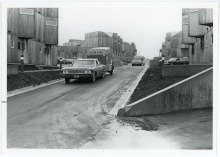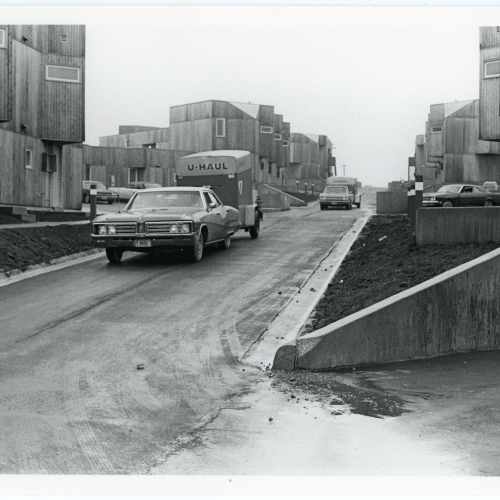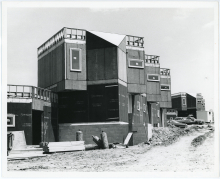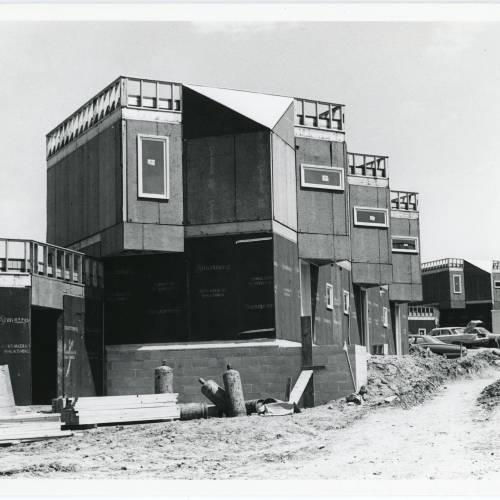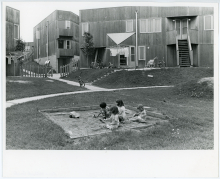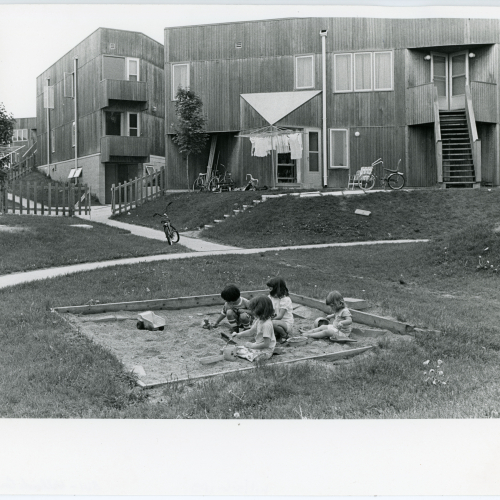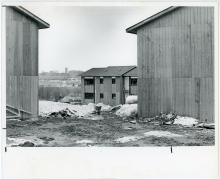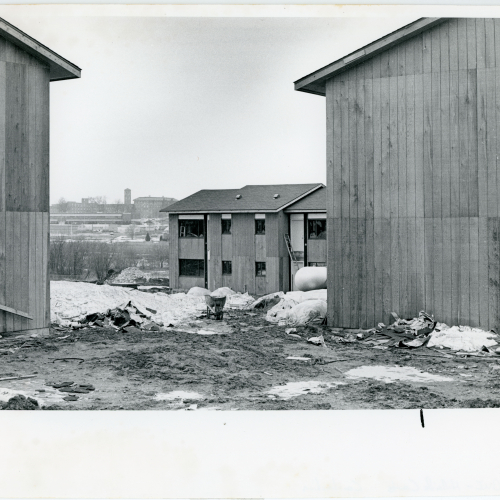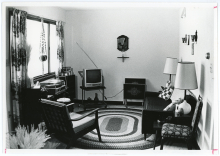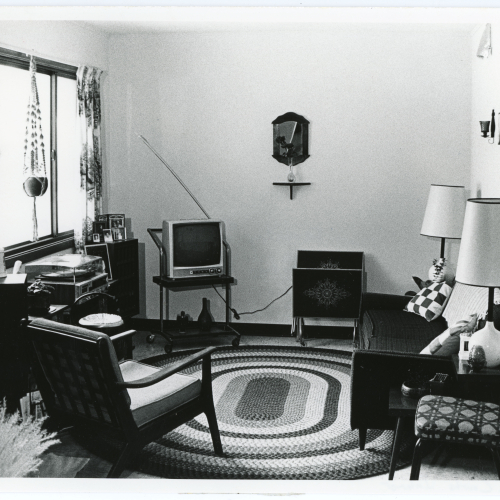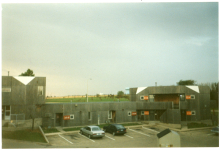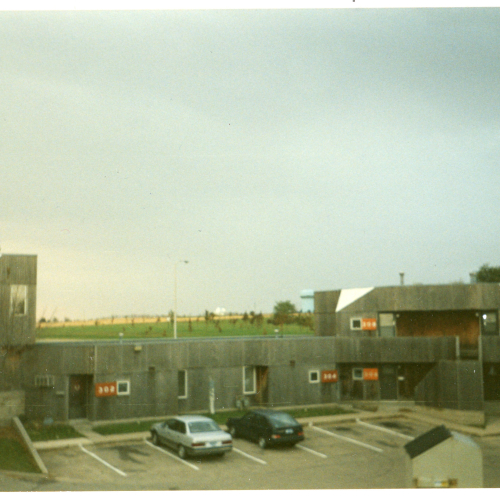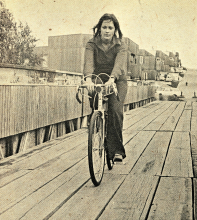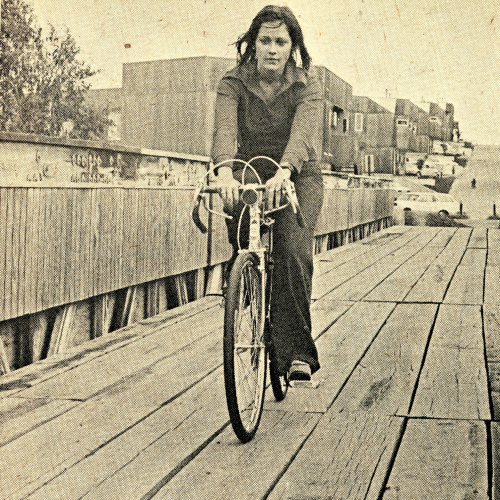Hillside Courts (1970)
After World War II, the University of Northern Iowa made a number of significant efforts to provide housing for married students and their families. The first effort, beginning in 1946, was Sunset Village, a collection of military surplus buildings that provided housing for about 144 students and their families. The next was College Courts, which began construction in 1955, and eventually provided twenty-four duplexes for student families. The third effort, beginning in 1963, was a collection of one hundred trailers known as South Courts.
Of these three housing areas, only College Courts could be considered permanent, so in September 1969, the Regents approved $4.1 million to construct about three hundred units of married student housing in the south part of campus. At that time, there were projections that the university might eventually build one thousand units in that area. Several prototype units would be built initially, and college officials hoped to have one hundred units ready for occupancy by fall 1970 and all three hundred units ready for fall 1971. The site for the complex would be on the rise south of University Avenue. The architect for the project was Hunter, Rice, and Englebrecht of Des Moines.
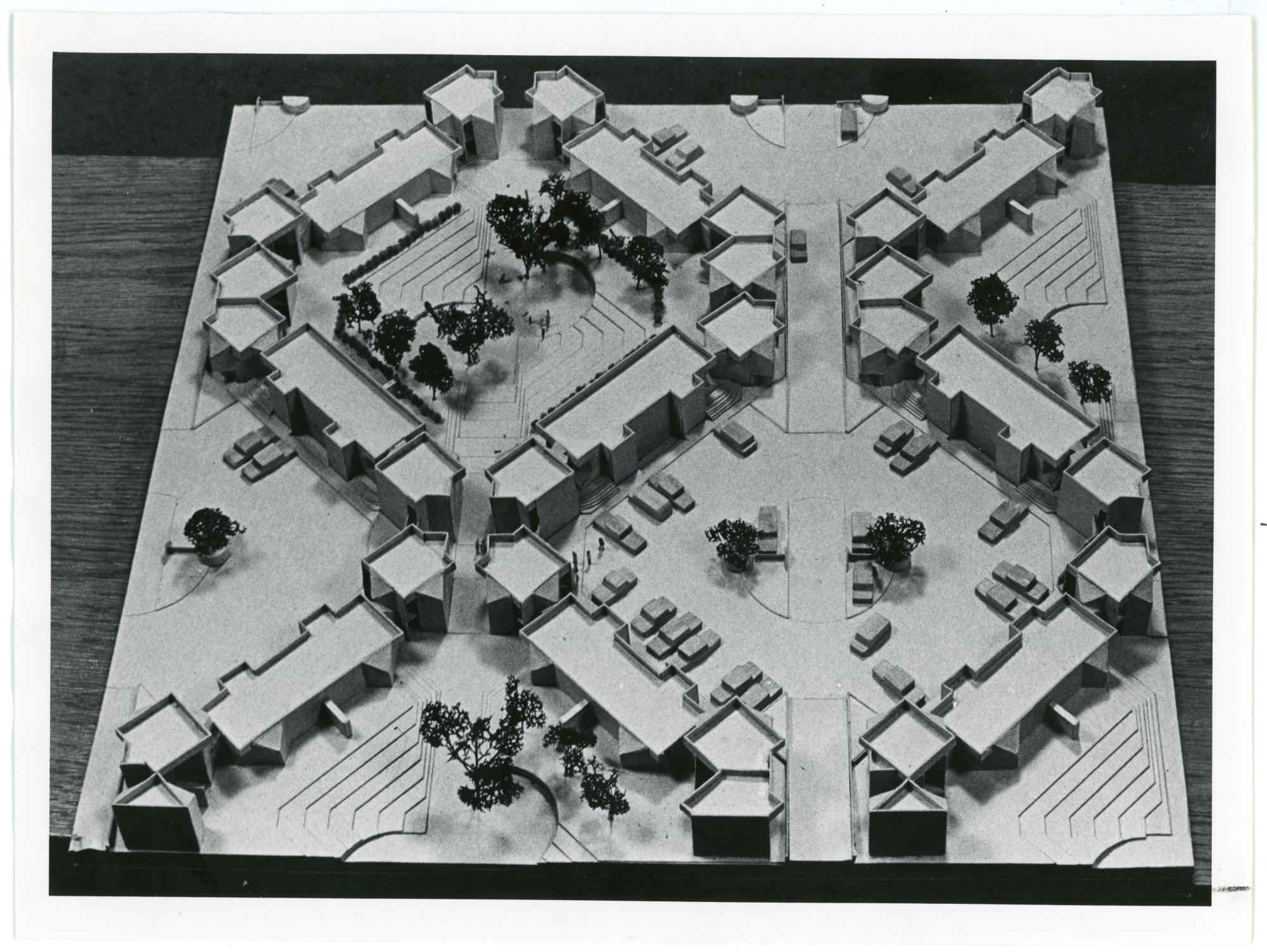
The units were planned to be built in several styles to meet the various needs of students and their families. Rent would range from $75 to $115 per month, depending on the size.. Sunset Village and South Courts would be phased out when the new complex was complete. Bids for the prototype units would be let November 5, 1969.

However, at their November meeting, the Regents, upon the recommendation of the University, rejected the initial bids for the six unit prototype because even the lowest bid was 25% higher than the architects' estimate of $90,000. The Regents directed the architects to revise the plans so that the project could meet the available budget.
In March 1970, the Regents approved revised plans for the housing complex. There were several major differences from the original plans. First, the buildings would be frame rather than brick and concrete. Second, there would be 278 units rather than the original planned 300 units. The budget for the project was $3.75 million. Wendell Lockard Construction Company of Waterloo won the general contract for the project. There would be three styles of apartment units varying in size according to students' needs and rent would range from about $90 to about $120, not including utilities. Units would be furnished with a stove and refrigerator and some would have air conditioning. By September 1970, the university architect reported that about one third of the units could be completed by fall 1971, with the remaining units to be completed by fall 1972.
Inclement weather and labor disputes delayed completion of the work on the initial units until early November 1971 when the first students moved in. There was some controversy between the Regents and the State Fire Marshall on responsibility for inspecting the units prior to occupation. This situation, with potential life safety implications, was exacerbated by a lack of telephone service to the complex for a brief period following initial occupation. However, university officials believed that even with these potential problems, the new complex was still safer than the decaying and dangerous Sunset Village units.
In November 1971, the Regents approved a contract of $41,000 for pedestrian access to the Hillside Courts complex. At that time, vehicular access was limited to a winding road off South Main Street. The back door of each unit faced a pedestrian court, and the front door faced the parking stalls. Carl DeChellis, director of housing, said at the time that the wooden exterior would take on a silvery gray appearance that would require little maintenance. He also noted that the six-sided rooms would demand a creative approach to interior decorating. While the complex was intended for students, the university administration also allowed faculty and staff to live in Hillside Courts at a higher rent and for no more than two years.
The Regents accepted the completed complex from the contractor in September 1972. Many new residents liked their new home. However, there were also substantial complaints as documented in an article in the Northern Iowan in summer 1972. Many residents were dissatisfied with a lack of direct motor vehicle access to campus. Complaints about the Main Street access road continued. On one icy morning in December 1973, a car accident blocked the road for over an hour, a potentially dangerous situation for complex residents.
The small bridge providing direct access to campus also came under scrutiny. Residents claimed that the gaps between the planks used as the roadbed were wide enough to grab narrow bicycle tires. They also said that this surface became very slippery when it was wet or icy. Construction on a direct vehicular road to Hillside Courts did not get underway until summer 1977. Other residents cited cramped quarters, lack of adequate closet space, and inconvenient arrangement of parking and streets.
Despite complaints, housing officials reported in January 1974 that the complex was 100% occupied. In February 1977, the Regents authorized the construction of forty additional Hillside Courts apartment units: five buildings with eight units each. The project budget, which included at long last, a service building and an access road to the complex, was $1.23 million. Stenson, Warm, and Grimes, Incorporated, of Waterloo was the architect. The project was to be completed by fall 1978.
Construction on the access road from College Street to Hillside Courts got underway in summer 1977, though winter weather delayed completion until June 1978. The new road was named Jennings Drive, in honor of long-time University Business Manager Philip C. Jennings. For a time after the completion of the new road, Hillside Courts was even served by city bus service. In 1981, access was provided from University Avenue to Jennings Drive.
Construction on the new apartment buildings was well underway by January 1978 and complete by July 1978. All new units were rented immediately. This set of buildings became known as Jennings Courts.
In 1983, a new exterior security lighting system was installed at a cost of $20,000. Despite initial claims that the buildings would require little maintenance, by 1985 housing officials stated that rotting siding, leaky windows, crumbling concrete, and deteriorating walls had become a persistent problem. A year later, officials reported that settling, with resulting cracks, moisture, and mildew, was a problem in some units; one unit that experienced particularly bad problems was turned into a storage area. Officials treated these problems in the best manner possible with the funds available. For example, in summer 1997, the university completed a $200,000 roofing and siding project in the complex.
By the mid-2010s, the condition of the buildings had taken a dramatic turn. Shifting land altered the buildings’ foundations, which affected doors and windows and led to other issues like broken water mains. With students’ housing needs changing and renovation not financially sound, the university decided to close Hillside Courts and demolition began in 2018. Former residents recall the sense of community that formed within that area and expressed sadness at the loss of it as an affordable housing option for non-traditional students. Today, newer residences, like Panther Village and Jennings Court Apartments, offer students alternatives to staying in the dorms.
Compiled by Library Assistant Susan Witthoft; edited by University Archivist Gerald L. Peterson, September 1996; substantially revised by Gerald L. Peterson, with research assistance by Student Assistant Janelle Iseminger and scanning by Library Assistant Gail Briddle, February 2004; last updated November 7, 2011 (GP); photos and citations updated by Graduate Assistant Eliza Mussmann, September 8, 2022; content edited by Graduate Intern, Marcea Seible, April 2025.

